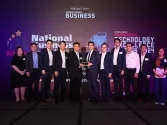
Coal stains remain in South Korea's green growth policy
Despite efforts to slowly reduce coal consumption, policies tilt towards coal and 5.4GW of plants are under construction.
In the background of the South Korean government’s strategy of low carbon and green growth lie coal projects with a total capacity of 5.4GW under construction and a pipeline for plants with a total capacity of 2.1GW, in addition to various ongoing retrofits. Analysts fear that the country’s low-carbon strategy risks being derailed by its continued focus on coal power.
Whilst coal still produces 43% of total gross generation, Matt Gray, head of power and utilities at Carbon Tracker, shared in an analysis that President Moon Jae-in has shown willingness to reduce coal reliance, first by announcing plans to decommission several operating plants and then cancelling the construction plans for two units. Despite this, he argued that continued reliance on coal in the form of enduring regulatory structures puts South Korea at the top of the countries with stranded asset risk.
“Our below 2°C scenario finds South Korea has $106b of stranded asset risk – the highest of the 34 countries modelled. The $106b represents the difference between the cash flow utilities may receive under the current South Korean power market and what they would receive in a below 2°C scenario, which sees capacity closed prematurely to meet the temperature goal in the Paris Agreement. This is due to regulatory structures which effectively guarantee coal generators’ high returns,” Gray said.
These regulatory structures include the merit order based solely on fuel costs; large-capacity market payments; and compensation for carbon exposure and transmission restrictions. With these in place, coal generators have larger cash flows than what they would receive in other markets abroad.
Moreover, a draft energy tax code by the government revealed plans to increase the fuel tax on thermal coal by 27% and lowering the tax on liquefied natural gas (LNG) by 75%. Gray said that this means the South Korean government will have to continue subsidising coal generators either directly through higher tariffs or indirectly through out-of-market payments in order to maintain financial viability or keep tariffs artificially low to prevent higher costs.
Coal conundrum
“Both outcomes could prove financially and economically unsustainable, as subsidising coal generation will either anger taxpayers or energy consumers, whilst artificially low tariffs for consumers will impact fiscal resources,” said Gray. “Policymakers should be able to look at the long-run marginal cost (LRMC) of individual coal units and draw up a retirement schedule based on this.”
Gray said this analysis will help policymakers close the costlier units before the cheaper units, whilst ensuring that consumers enjoy the lowest cost of electricity possible. An alternative retirement schedule based on emission intensity targets may not result in a more favourable outcome.
![]()
Analysts at Carbon Tracker also found that it will be cheaper for the country to build new solar photovoltaic (PV) plants than to operate existing coal plants by 2027. They forecast that the levelised cost of electricity (LCOE) for solar will dip below $50 whilst the LCOE for coal will plateau. Other renewable energy options, particularly offshore wind power, are also being focused on due to land, environmental, and permit constraints around solar power in South Korea.
Nuclear: go or no?
Next to coal, nuclear energy has also become a pillar of South Korea’s reliable and affordable electricity supply. Hana Kim, assistant professor at Sejong University, wrote in a paper that nuclear power has been promoted as a zero-emission energy source that could help efficiently respond to climate change. Nuclear power plants in the country are responsible for 20.5GW or 22% of total generation capacity.
Jonathan Cobb, senior communication manager at the World Nuclear Association, shared a recent survey which revealed that seven in 10 are in favour of the current level of nuclear generation, and more are in favour of increasing rather than decreasing it. Increased interest in nuclear is a result of recent emergency measures introduced to counter air pollution and shutting down fossil fuel plants, he added.
However, concerns raised against the safety of nuclear reactors have led the government to slowly phase out nuclear power in the country. Cobb argued that antinuclear policies such as this are out of step with the opinions of voters.
The question remains, however: is nuclear a safe and viable option for Asian countries? Daniel Brenden, senior power & renewables analyst at Fitch Solutions, said that Japan is perhaps the best example, where increasingly stringent safety requirements have hiked costs for nuclear power restarts.
“There are also a number of new nuclear facilities developed in the region that use third-generation reactor technology, which improves safety but also adds complexity and cost to nuclear plant development. Third generation reactors that are operational or under construction include the APR-1400 in South Korea, CPR-1000 in China, ABWR in Japan, and HPR-1000 in China,” Brenden said.
In addition, Kim said that whilst the stance on closing down old coal-fired power plants is accepted well by the public, opinions on phasing out nuclear power reactors are in a cacophony. According to her, there remains an active debate on a reliable and affordable supply of electricity in conjunction with the safety and environmental concerns about the electricity system.
“The most controversial issue was whether to complete construction of the Shin-Kori #5 and #6 nuclear plants, which were planned to be completed by 2021 and 2022, respectively. To collect public opinions and decide whether to resume the construction project after suspending the project, an unprecedented deliberation process has been carried out.”
Whilst the current scenario of closing old coal-fired power plants and phasing out nuclear power is a picture of economic competitiveness, according to Kim, to enable this movement, electricity demand should be decreased. Lower demand means an easier energy transition to a more ecologically friendly energy industry that is also economically feasible.
“Current debates about nuclear phase-out in South Korea are still biased toward supply: what energy resource will meet our demand? The energy transition needs to be discussed in terms of demand as well. Without consideration of electricity demand, it is impossible to achieve a transition to a safer and more ecologically friendly energy system,” Kim said.
As the government rethinks its energy strategy, alternatives to nuclear and coal like offshore wind are emerging. Joo Hee Lee, managing partner at Linklaters Seoul, said in a January note that offshore wind energy has been given the highest weight value for renewable energy certificates (RECs) by the South Korean government. The weight value of the RECs of offshore wind ranges from 2.0x-3.5x.

The focus on offshore wind power is a result of the concerns arising from large-scale solar projects constrained by land, environmental, and permit issues. Lee said that South Korea is targeting to build new offshore wind facilities with an installed capacity of 12GW between 2018 and 2030 to meet the 20% target.
Exploring offshore
“A key challenge for developing offshore wind projects in Korea is the lack of a track record of large-scale commercial offshore wind projects, in particular, those with international participation, as most of the offshore wind projects developed to date have been led by the South Korean Government in a ‘top-down’ format,” Lee said.
Despite these concerns, Lee said that the Korean offshore wind market is still attractive given the country’s favourable topography, such as in the South and North Jeolla provinces. Other bright spots include well-developed infrastructure and the South Korean government’s initiatives and support for the resource.
The current support mechanism for renewables projects, the Renewable Portfolio Standard (RPS) scheme, requires generators with 500MW or higher generating capacity to produce a minimum proportion of their power using new and renewable energy sources. They could also satisfy this requirement by buying RECs from generators.
However, what could ultimately drive the renewables market in South Korea is the government’s focus on the smart grid that would drive the development of technologies like smart meters, energy management systems, and energy storage systems, according to a note by law firm Jipyong. Not only that, the aggressive ramp-up of renewable targets as part of countermeasures against the problem of fine dust in Seoul and neighbouring locations could also serve as a catalyst.
The 3020 Implementation Plan for New and Renewable Energy first mentioned in 2017 contains certain planned policy changes that will involve the expansion of solar power generation in agricultural land areas, local communities’ participation in renewable energy projects from the initial stages and the offering of incentives that are intended to support small renewable energy projects, amongst other things.
“From this plan, it can be expected that the expansion of renewable power generation in the near future will also be driven by small-scale renewable energy producers, with large-scale renewable projects such as offshore wind projects continuing to be driven by big companies, including the six power generation subsidiaries of KEPCO,” Jipyong said.








![Cross Domain [Manu + SBR + ABF + ABR + FMCG + HBR + ]](https://cmg-qa.s3.ap-southeast-1.amazonaws.com/s3fs-public/styles/exclusive_featured_article/public/2025-01/earth-3537401_1920_4.jpg.webp?itok=WaRpTJwE)
![Cross Domain [SBR + ABR]](https://cmg-qa.s3.ap-southeast-1.amazonaws.com/s3fs-public/styles/exclusive_featured_article/public/2025-01/pexels-jahoo-867092-2_1.jpg.webp?itok=o7MUL1oO)









 Advertise
Advertise


